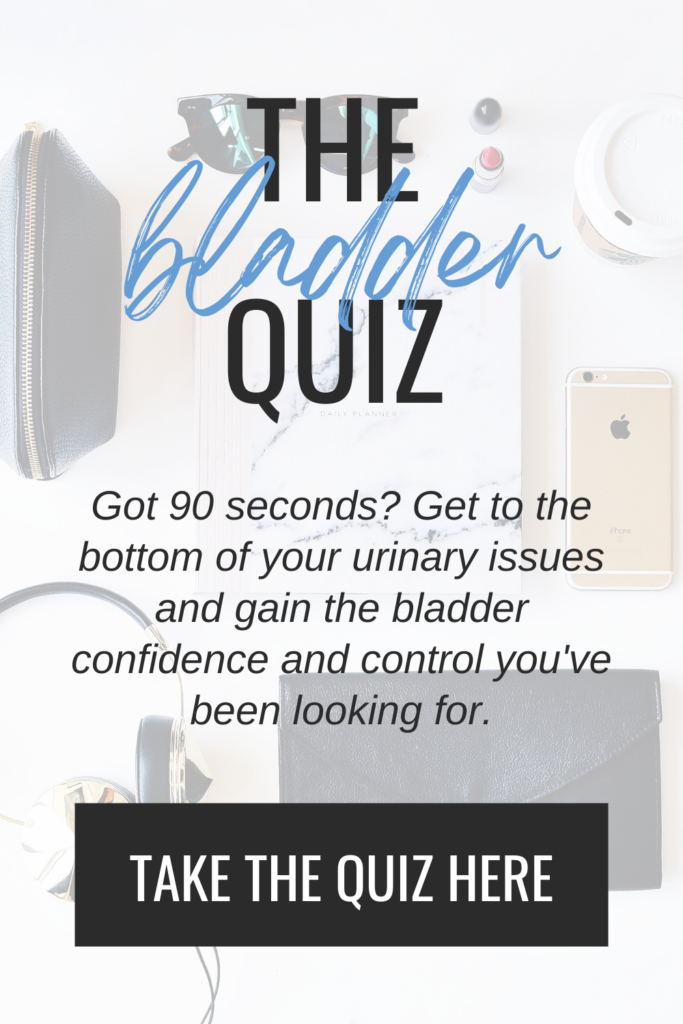I don’t want to assume anything (you know what they say about that), but my guess is if you’re reading this little ol’ blog post in front of you…you’re breathing. Again, I don’t want to assume, but being alive kiiiiiinda requires the mechanical and chemical processes of bringing oxygen into the body and pushing carbon dioxide out for the heart, lungs, brain, etc. to function.
Other than the “simple” act of keeping you alive, breathing also has benefits that directly influence pelvic floor health. In fact, effective breathing is one of the first things I teach patients as a practicing pelvic rehab therapist, because treating pelvic pain, incontinence, prolapse, constipation, and even abdominal scarring all depend on it.
All that begin said…once you know how to properly breathe, you can essentially spend every second of every day improving your pelvic floor health. It’s literally just an inhale and exhale (and inhale and exhale) away!
Pelvic health isn’t rocket science – it’s likely you already have all the necessary tools to address the issue(s) that bring you to this post today. Once you have the guidance for when and how to use those tools (like breathing), that is where the magic happens. I want everyone to experience the power of breath, and following the steps below is the ~perfect~ place to start.
FIRST…WHAT IS “PROPER” BREATHING?
We’ve already established that you’re breathing…check!…but there’s a right and wrong way to do so, especially when it comes to pelvic floor health. When breathing properly, the chest, abdomen, and pelvic floor should all move together. Upon inhalation, the chest rises and diaphragm descends as the lungs fill with air. The abdomen expands and the pelvic floor slightly and softly lowers to create room for air. With exhalation, the exact opposite occurs – chest and abdomen return as the diaphragm and pelvic floor elevate.
I often refer to this as “piston breathing” because the diaphragm and pelvic floor move together like a piston in a car. (Don’t ask me anything more about cars…[this] is the extent of my knowledge.)
Many women breathe with only their chest, and I hypothesize this is due to chronic stress, wearing clothing that’s too tight, and/or the habit of sucking in their abdomen (thank you societal pressures). For this reason, piston breathing can be difficult to get at first, especially if you’ve been breathing incorrectly for a majority of your life. The good news is that the average adult breathes about 14 times a minute, 840 times per hour, over 20,000 times a day, meaning you’ve got ~plenty~ of opportunities to practice.
HOW TO PRACTICE PISTON BREATHING
- Either sitting or lying on your back, place one hand on your chest and one hand on your abdomen.
- Inhaling through your nose, gently fill your chest, abdomen, and pelvis with air as if your entire trunk is a balloon. With a bit of practice, you should feel your chest and abdomen expand into your hands and your pelvic floor faintly lower.
- Exhaling through your mouth, notice the chest and abdomen return and the pelvic floor slightly rise.
- I encourage my patients to practice piston breathing for five minutes a day, with my favorite time being when getting in bed at night. Spend half of those minutes taking larger, more exaggerated breaths to really feel the chest, abdomen, and pelvic floor move. Then take more “regular” breaths and see if you can still sense that movement.
- Once piston breathing becomes more second nature, start incorporating it into your everyday activities. I do this while driving to and from work, in the shower, cooking, breastfeeding, and rocking my daughter to sleep.
- The goal is that, with practice, this becomes how you naturally take every breath.
BREATHING FOR INCONTINENCE AND PROLAPSE
Kegels and pelvic floor strengthening are the most common way to treat urine leakage and pelvic organ prolapse. And while those little pelvic floor muscle contractions do play a role in addressing the above, allow me to step up on my soapbox and report that breathing is ~even~ more important. Here’s why–
When you piston breathe and the pelvic floor moves up and down with every breath you take, it’s constantly passing through its mid-range (picture a sine wave from your trigonometry days). Our muscles have the strongest fiber connection at this mid-point, which carries over to better bladder control and prolapse support.
Also, breath holding is a common cause of urine leakage and pelvic heaviness with exercise and movement. Forgetting to breathe while running or jumping rope and holding your breath with weight lifting or core workouts places an unnecessary downward pressure on the pelvic floor and can exacerbate bladder and prolapse symptoms.
So breathe! And piston breathe if possible! Not only will this ensure your pelvic floor is moving through that magical mid-range, but it will also prevent excess pressure on your pelvic floor. I like to count when I run or jump rope and inhale/exhale every [insert # that works for you here] steps or reps. When weight lifting and strengthening, breathe out on the hard part of the movement to lift and support the pelvic floor, and in on the easy part or between repetitions for best results.
BREATHING FOR PELVIC PAIN
One of the Thee primary cause of pelvic pain (including pain with intercourse, period pain, endometriosis- and PCOS-related pain, lower abdominal pain, and tailbone pain) is pelvic floor tension, and I firmly believe the root of most pelvic floor tightness is breathing incorrectly. If the pelvic floor isn’t moving with every breath you take, the muscles are more likely to stay contracted, or get “stuck”. Piston breathing is one of my favorite ways release pelvic floor tension and decrease pelvic pain.
RELATED POST: My Daily Pelvic Floor Relaxation Routine + Why You Might Want to Try It Too
RELATED POST: 7 Holistic Menstrual Cycle Hacks To Help You Thrive During Your Period
When breathing specifically for pelvic pain and tension, it’s important to focus on the inhale as this is when your pelvic floor relaxes/goes down/descends. When you’re experiencing pain, try taking a few piston breaths (or perform one of the other three pelvic floor relaxation techniques that ~literally~ work wonders) and notice if you can feel your pelvic floor release and pain decrease. Practicing this over time can eliminate pelvic floor tightness and therefore reduce and even resolve pelvic pain.
BREATHING FOR DIGESTION + CONSTIPATION
There are multiple causes for constipation and other digestive issues, but two common culprits are lack of blood flow to the intestines and poor gut mobility. Both of these issues result in slow movement of waste through the GI system, often creating bloating, gas, harder stool consistency, and infrequent bowel movements. And because the gut is directly connected to the brain and endocrine (hormone) system, you might imagine the cascade of negative symptoms that can ensue.
By now you know that piston breathing moves the abdomen and pelvic floor with each and every breath, but it also increases intestine blood flow and mobility as well. This isn’t an instance of immediate improvement or overnight results, but breathing properly can have a positive effect over time.
If you find yourself with gut or bowel issues, perform a few minutes of piston breathing throughout your day and especially when sitting on the toilet. There’s no wrong time to breathe properly, but there are right times…and this is one of them.
BREATHING FOR ABDOMINAL SCAR ADHESION
C-Section, hernia repair, laparoscopic surgery, tubal ligation, hysterectomy, appendectomy, cholecystectomy…these are all common surgeries that typically result in abdominal scaring. While some of these scars may seem small on the surface, there are likely larger scars below them, and these layers of incisions and stitches can cause adhesions, poor mobility, and abdominal pain over time.
While there are multiple scar mobilization techniques to mitigate this, abdominal movement with piston breathing can help as well.
When piston breathing specifically for abdominal scarring, focus on expanding the restricted area as you inhale. Fill it with air, get it to stretch, and allow each breath you take to start moving those adhesions. You can (and definitely should) begin breathing immediately after surgery, and piston breathing as soon as possible may even prevent these issues from starting in the first place.
BREATHING FOR STRESS MANAGEMENT
Between wars, world disasters, workplace woes, and wild schedules, stress, worry, and anxiety are near constant these days. And while stressors have changed over time from being chased by a lion to rush hour and public speaking, our body’s response to said stress has not. The sympathetic nervous system initiates cortisol production, muscle tightness (even in the pelvic floor), a fast heart rate, and quick and shallow breathing whether the trigger is a life or death situation or unpleasant irritation.
There are many ways to break this chronic stress cycle, but piston breathing is one of my favorites because it’s so accessible. With just a few deep breaths you can slow the breath and heart rate, decrease cortisol production, and soften the pelvic floor muscles.
Your morning commute, lunch break, or sippin’ your nightly cup of ~whatever~ is the perfect time to breathe and feel the worry melt away. Stress is a primary cause of pelvic floor tension (scroll back up to BREATHING FOR PELVIC PAIN for more on this), and the simple act of piston breathing is the ~perfect~ way to alleviate all of the above.
BREATHING FOR BETTER SLEEP
I’m a biiiiiiig fan of sleep, and there are many reasons I recommend practicing piston breathing right before bed. Not only is this an ideal time for (potentially) quiet and uninterrupted focus, but piston breathing also slows the heart rate, calms the nervous system, and allows for more oxygen consumption, all of which promote more restful and productive sleep.
RELATED POST: Your Day Starts at Bedtime: 25 Easy Habits for a Better Night’s Sleep
How does this relate to pelvic health, you ask? Well…sleep relates to all types of health because nighttime is when the body rests, restores, repairs, recovers, and replenishes itself. A good night’s sleep helps with hormone regulation, energy through the day, healing from trauma, and stress management to name a few.
Remember…you can piston breathe whenever and wherever you like, but I experience the most benefits when making this a pre-sleep practice (1000000000% acceptable if you doze off while doing it, btw). This can improve how fast you fall asleep and enhance your sleep quality, all wins that I’ll take advantage of any and every day of the week.
I’m a firm believer that addressing pelvic floor issues doesn’t have to be difficult. In fact, many of the strategies I teach are easily accessible and completely doable for even the busiest of women. If you can breathe, you can see improvement in your pelvic health, it just takes time, proactivity, and a bit of mindfulness.
So now I want to know…which of the above benefits of breathing are going to have you inhaling and exhaling your way to better pelvic health? Eeeeeeeeek! I get giddy just thinking about it!
Urine leakage, prolapse, pelvic pain, digestive issues, and abdominal scarring can all be resolved. “That’s just the way it is” does not…I repeat…NOT apply to pelvic health. Shall I say it louder for those in the back?!? I can’t wait to see what piston breathing does for you with practice and persistence.
– Amanda
Disclaimer: The content provided here does not constitute medical advice, nor is it a substitute for personalized healthcare. If you have concerns about a medical condition, diagnosis, or treatment, you should consult with a licensed healthcare professional.



















